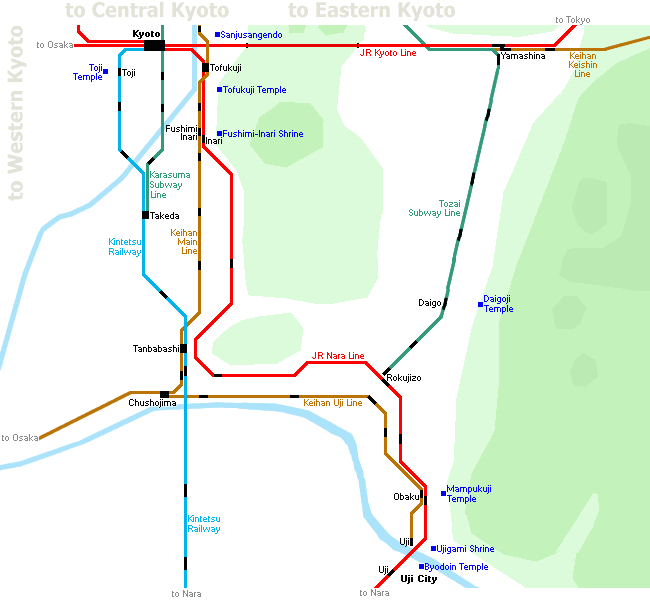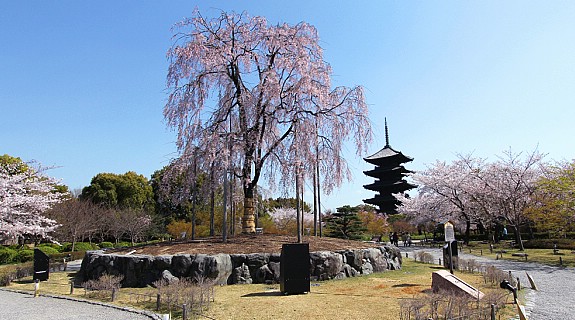
Toji Temple (東寺, Tōji), literally "East Temple", was founded at the beginning of the Heian Period just after the capital was moved to Kyoto in the late 700s. The large temple, together with its now defunct sister temple Saiji ("West Temple"), flanked the south entrance to the city and served as the capital's guardian temples. Toji Temple is one ofKyoto's many UNESCO world heritage sites. About thirty years after the temple's establishment, Kobo Daishi, the founder of the Shingon sect of Japanese Buddhism, was appointed head priest of Toji, and the temple became one of the most important Shingon temples besides the sect's headquarters on Mount Koya. Kobo Daishi also added many of the large wooden buildings that stand on the grounds today. 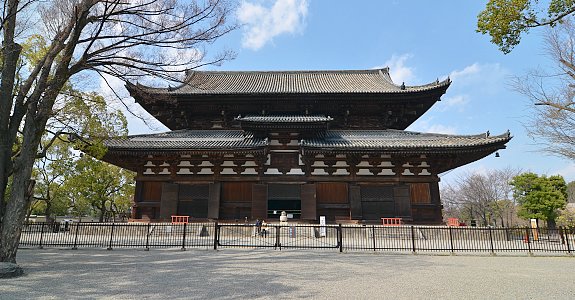
The Kondo Hall, one of Toji's original structures, is the temple's main hall and largest building. Destroyed by a large fire in 1486, the building was reconstructed in the early Edo Period in a contemporary architecture style and houses Toji's main object of worship, a large wooden statue of the Yakushi Buddha, flanked by his two attendants, the Nikko and Gakko Bodhisattvas. Just next door stands the Kodo Hall, which was added in 825 by Kobo Daishi and served as the temple's lecture hall. It too burned down in the 1486 fire, and was subsequently rebuilt in its original architectural style. The Kodo Hall houses 19 statues imported by Kobo Daishi from China, which are arranged according to a mandala with Dainichi Buddha (Vairocana) at the center, surrounded by buddhas, bodhisattvas and the fearful and guardian kings. Across from the Kondo and Kodo stands Toji's five storied pagoda, which was originally erected by Kobo Daishi in 826. It stands 57 meters tall, making it the tallest pagoda in Japan, and has become a symbol of both the temple andKyoto as it can be seen from many places across the city. The ground floor of the pagoda is irregularly opened to the public and houses four smaller Buddha statues. 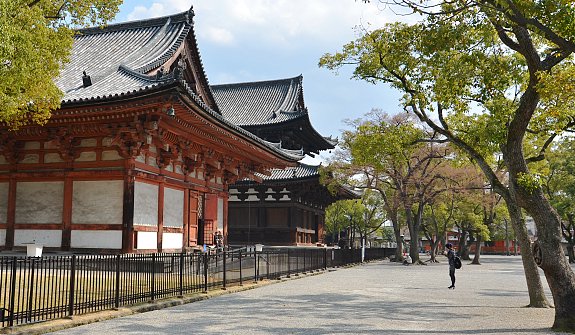
To the west, outside of the paid area stands the Miedo Hall (Founder's Hall) with a statue of Kobo Daishi. And nearby is the Homotsukan Museum, Toji Temple's treasure house, which displays several large Buddhist statues and other important artifacts. However, the museum is only open from late March to late May and again from late September to late November. A popular flea market is held on the 21st of each month at Toji Temple from the early morning hours until around 16:30 in the afternoon. The lively market is crowded with vendors on the plaza and in the park that surround the paid temple grounds. A wide variety of new and second hand goods are on sale, including clothes, tools, sculptures, kimono, antiques, pottery, toys, food and plants. A smaller antiques market is held on the first Sunday of the month. 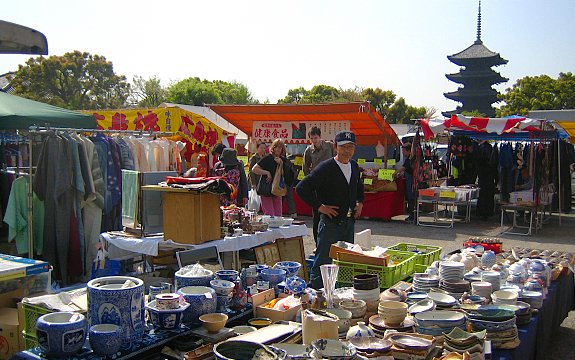
|
